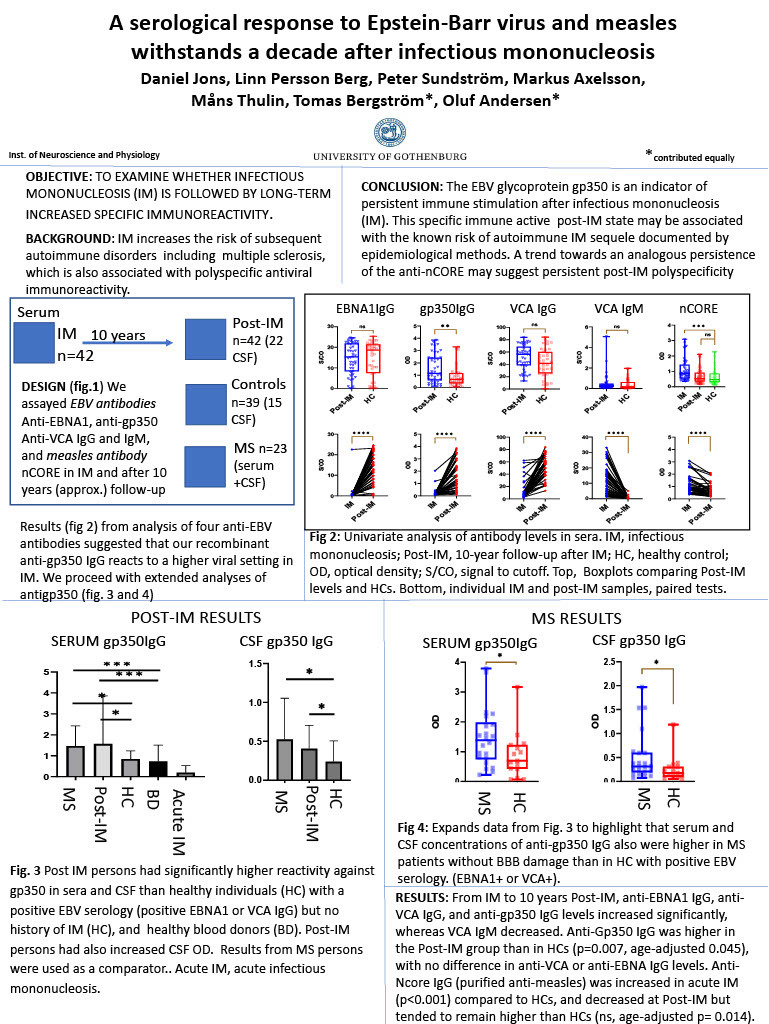A serological response to Epstein-Barr virus and measles withstands a decade after infectious mononucleosis
Abstract
Background:
Infectious mononucleosis (IM) is characterized by expansion of Epstein Barr virus (EBV)-infected B memory cells and polyspecific antiviral immunoreactivity. IM increases the risk of multiple sclerosis, which is also associated with measles-rubella-zoster polyspecific immunoreactivity.
Objective:
To examine whether IM is followed by long-term changes in antiviral immunoreactivity.
Methods:
We conducted a follow-up (FU) investigation of 42 currently healthy individuals who had contracted IM from 2003 to 2007. We assayed anti-EBNA1 IgG, anti-VCA IgM and IgG, anti-gp350 IgG (anti-EBV), and anti-Ncore IgG (anti-measles) in sera obtained during acute IM and recent post-IM FU, and in 39 healthy controls (HCs) with low prevalence of IM.
Results:
Anti-EBNA1, anti-VCA, and anti-gp350 IgG levels increased significantly, whereas VCA IgM decreased from acute IM to FU. Anti-Gp350 IgG was higher in the FU group than HCs (p=0.045, age-adjusted), with no difference in anti-VCA or anti-EBNA IgG levels. Anti-Ncore IgG was increased in acute IM (p<0.001) compared to HCs, and decreased at FU but remained higher than HCs (p=0.014, age-adjusted).
Conclusion:
Intense immune stimulation occurs during IM, and clones that acquire anti-EBV and anti-measles reactivity during IM seem to survive. This adds an immunological aspect to the long-term epidemiological link between IM and multiple sclerosis.

